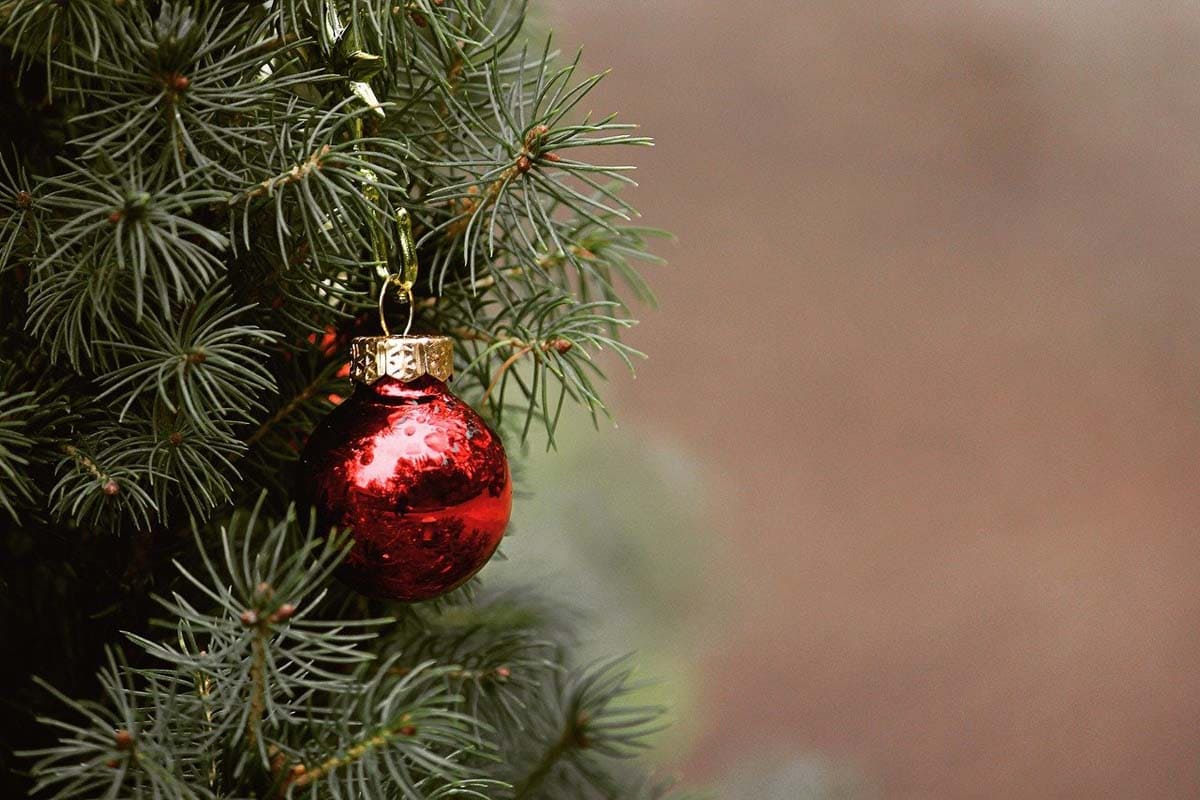Nothing says Christmas more than a real Christmas tree, the scent, and freshness of a live Christmas tree adds that extra touch. But are Christmas trees toxic to cats and what, if any, risks do they pose to our feline family?
Fir, spruce, and pine are the most common type of Christmas trees, these three varieties are made up of several different species.
Non-toxic
Spruce
Scientific name |
Common name |
|
| Picea abies | Norway spruce | Non-toxic to cats |
| Picea pungens | Blue spruce | Non-toxic to cats |
| Picea omorika | Serbian spruce | Non-toxic to cats |
| Picea glauca | White spruce | Non-toxic to cats |
Fir
Scientific name |
Common name |
|
| Abies nordmanniana | Nordmann fir | Non-toxic to cats |
| Abies fraseri | Fraser fir | Non-toxic to cats |
| Pseudotsuga menziesii | Douglas fir | Non-toxic to cats |
| Abies procera | Noble fir | Non-toxic to cats |
| Abies balsamea | Balsam fir | Non-toxic to cats |
| Abies grandis | Grand fir | Non-toxic to cats |
Take care
There is little information regarding the toxicity of pinus species, therefore it is recommended that pet owners avoid these trees.
Pine
Scientific name |
Common name |
|
| Pinus sylvestris | Scotch pine | No information available |
| Pinus strobus | White pine | No information available |
| Pinus virginiana | Virginian pine | Listed as toxic to dogs, no information on cats |
| Araucaria heterophylla | Norfolk or house pine | Non-toxic to cats |
Christmas tree dangers to cats
Even non-toxic Christmas trees still pose a risk to cats.
- Sharp needles can cause damage to the gastrointestinal tract if they are swallowed.
- Pesticides, fertilisers, aspirin and tree preservers can leech out of the soil when the tree is watered which can pose a danger if the cat drinks the contaminated water (and cats love to drink out of planter trays).
- Trees can fall over it a cat attempts to climb them or play with Christmas decorations. Tie trees to the ceiling or a doorframe with fishing line.
- Angel hair tinsel (the long, slender strands) is attractive to cats and can cause a severe and life-threatening telescoping of the intestines or a gastrointestinal obstruction if ingested.
- Christmas lights can cause electrocution and tissue damage if the cat chews through the wire.
- Broken Christmas decorations can cause injury if stepped on.
- Small ornaments can be swallowed and cause gastrointestinal obstruction.
Christmas tree safety for homes with cats
- When you bring the tree home, saw 1 inch off the base which will help the tree to take up more water and shed fewer needles. Put the tree into water immediately after the but end has been sawed.
- Set the tree up away from heat sources such as radiators or vents and windows as these locations will dry the tree out faster, causing it to lose more needles.
- Secure the tree to a wall, to do this, make a sling of strong fishing wire around the tree and secure to a hook in the wall.
- Add Christmas lights deep inside the Christmas tree, not only does this reduce the risks of a cat chewing on the wire, but it looks prettier if you can’t see the wires. Any leftover wire between the bottom of the tree and the plug can be covered in clear plastic tubing. Unplug lights from the wall when not in use.
- Choose a tree that holds onto its needles for longer. These include the Nordmann fir, Douglas fir, and Balsam fir.
- Use a tree stand with a covered water reservoir to prevent your cat from drinking the water if you don’t have a covered tree stand, place foil over the water.
- Avoid tinsel if possible, but if it is a must on your tree, only use it on the higher branches.
- Add plastic ornaments to the bottom of the tree and more delicate ones higher up. Secure well so that they can’t be batted off.
- Do not hang chocolate decorations on the tree; chocolate is toxic to cats.
- Where practical, place the Christmas tree in a location away from furniture the cat can use to launch itself upon the tree.

